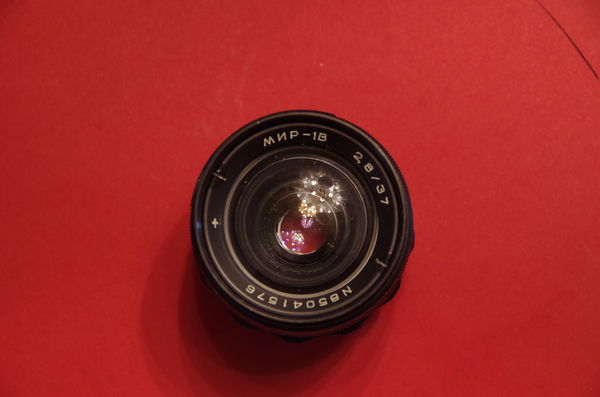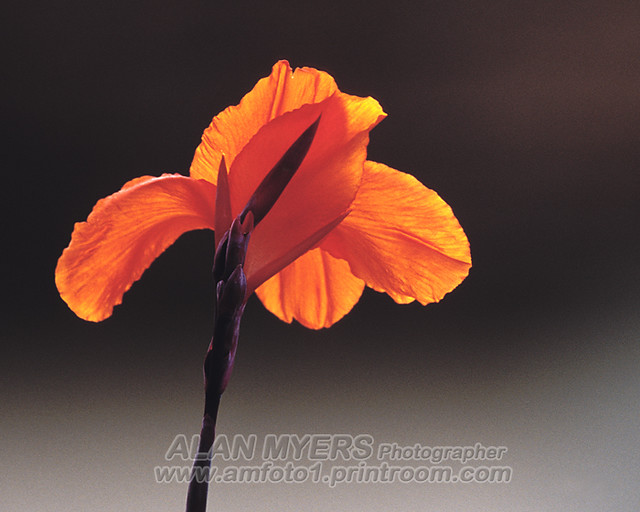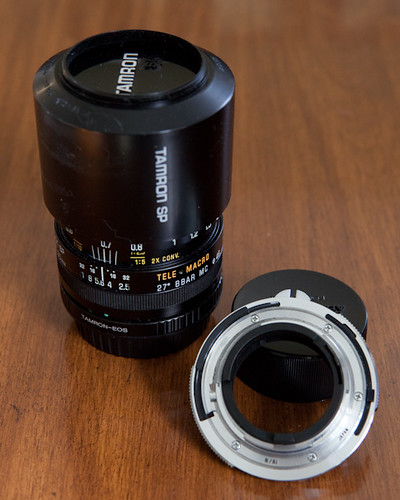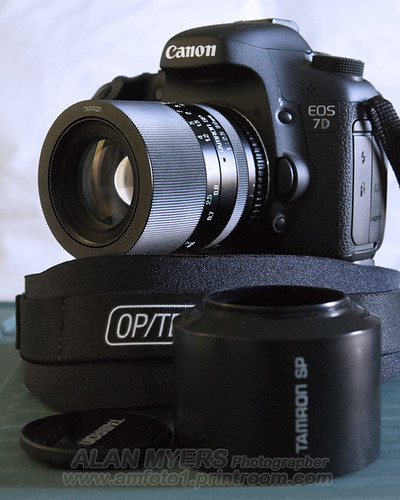Posts for: rehess
Apr 18, 2018 19:32:43 #
amfoto1 wrote:
If you want autofocus, there are very many lenses ... (show quote)
What 'service' does the chip provide that enables focus confirmation? - focal length, perhaps?? For some reason, Pentax cameras provide focus confirmation without a chip.
Apr 18, 2018 13:26:55 #
edrobinsonjr wrote:
Why, pray tell, is pulling a single frame from a video misusing tools?
First of all, I didn't say 'video' - I said 'movie'. A single frame from a Super Eight is more like an Instamatic 110 than like a 35mm. Yes, I know that theater quality films were 35mm, but using a camera from Hollywood to produce stills - with no intention of using it as a movie - is like killing ants with a jackhammer.
The future of stills may come from 8K video, but right now, a single frame from a true video camera - which was the comment I was responding to - is much lower quality than a still from a good camera, either DSLR or MILC.
Apr 18, 2018 10:33:20 #
throughrhettseyes wrote:
Mirrorless is nothing but a limited video recorder. You will never get the real life look through the viewfinder as you will the DSLR or SLR for that matter. You are looking at a JPEG video representation of the subject. That should tell you enough right there. If you want to go mirrorless then buy a full blown video camera. The video cameras take stills also.
You could have pulled single frames from a movie camera, too, but misusing tools {such as hammering with a pipe wrench} has never made much sense.
Apr 18, 2018 00:10:44 #
speters wrote:
First, one should always save a master file, from which a jpeg, or tiff, or whatever one choses, can be made for the specific purposes (printing etc.). A good print can be made from either, jpeg, or tiff, but jpeg are not at all good for making adjustments/doing any processing, they are mainly only for display on a monitor/social media, or used as a final print file!
Workflow which brought images of the Winter Olympics to us was entirely JPEG, from high-priced cameras wielded by high-priced photographers to editors {right now I can't find the article telling what operations they were allowed to perform} to world wide press.
Apr 17, 2018 22:35:51 #
Arubalou wrote:
I would like to start working with raw files...can anyone recommend freeware that i can use to get the feel of this before investing in a better program?
Darktable
https://digital-photography-school.com/darktable-vs-lightroom-does-it-measure-up/
RawTherapee
http://rawtherapee.com/
Each is $10/month less expensive than the Adobe products
Apr 17, 2018 19:33:53 #
GAS496 wrote:
“To me, the effort and joy come before pressing the shutter, but you're allowed to operate otherwise.”
I am not sure what that means.
I am not sure what that means.
With film, I normally shot Kodachrome. Once I had pressed the shutter, I turned remaining work over to professional automation; I largely operate that same way today. Some people, some, not all, of those who labored many hours in a Darkroom, and now do the same in a Lightroom, seem to dismiss anything without intensive after-processing as a 'snapshot'. My wording was mean to encapsulate the idea that I do put in some effort, but it mostly comes as Pre-Processing; my wife is totally prepared these days for a "five minute photo stop" to stretch out to thirty minutes or more as I struggle to capture the scene I want, that I saw in my head before I stopped
I totally respect the OP as an artist, and I do not want to turn this thread into yet another long-drawn-out squabble about the place of Post-Processing, so I will make no more comments on this subject. I just wanted to point out that some aspects of a photograph, such as perspective and DOF must be right when the image is first captured.
Apr 17, 2018 18:05:54 #
Higher useable ISO - I see no reason to get faster {and heavier} lenses if my next body can provide the low-light performance I need. My current plans are to purchase a Pentax KP, but not for another year, and all kinds of things could happen during that time.
Apr 17, 2018 17:25:40 #
If you do experiment with these lenses, you need to recognize that all lenses manufactured "back then" were built to a different standard; various optic qualities were more important to them than 'corner to corner sharpness' {which is all some people look at today}
Apr 17, 2018 17:18:14 #
mrussell wrote:
The size an online image appears depends, at least in part, on the CSS of the image tag. The image can be styled to display at a different size than the image itself.
Yes, and the number of pixels allocated by the browser can also be controlled via the 'width' and 'height' specified as part of the 'img' tag; in fact, the text I used when I taught computer literacy recommended using one of those methods as being more efficient than having the browser figure it out from the image.
However, the point of this demo is showing that the browser does not use dpi when it has to figure out the size on its own.
Apr 17, 2018 16:49:08 #
linkadv5 wrote:
Nobody who is allowed to comment here knows what the next year or two will bring, but that is not really relevant to your question. Perhaps some day you will want to replace this gear. That is when the questions being asked today about Mirrorless Interchangeable Lens Cameras will be relevant to you, and by then we should know the answers. According to another post, you currently use a D3200 - nothing fancy there - most likely, there will be adapters allowing you to use your current lenses on a MILC, if you still want to. In the meantime, your D3200 and lenses should continue to serve you just as they are right now.I have a nikon DSLR camera. I have bought a few lenes for the camera. I really have to save up to buy this stuff. Is this mirrorless technology a step up in, quality, or is it like TVs, a new gimick every 6 months ? A previous article stated that this mirrorless wave of technology will hit us this summer, with many more cameras and lenes. Are we going to eventually get rid of DSLR technology? Should we continue to buy DSLR technology? Any thoughts from folks with limited budgets.
Apr 17, 2018 08:55:30 #
mwsilvers wrote:
So, 51.5% of what and 83.5% of what. That can't be a percentage of all images captured. The two together will come to 135%.
Apparently 51.5% of the winners were Nikon DSLRs.
That leaves at most 32.0% for Canon DSLRs.
repleo wrote:
I think the whole DSLR / Mirrorless thing has been beaten to a pulp over at http://www.uglyhedgehog.com/t-523580-1.html Over 300 comments and 12,500 views and still rising. Maybe we should give that a rest for a week or so and just focus on Canon vs Nikon.
From the way you wrote this, no one who didn't already know would guess that you're the OP of that particular thread.
Apr 16, 2018 22:44:51 #
JD750 wrote:
Framing was different in the 3rd because I shot the Olympus pic first, and the longer focus distance of the Nikor lens required me to move away to get it in focus.
Different framing would effect both focus and metering. When metering contains more of the darker area, that area wouldn't be so badly underexposed.
Apr 16, 2018 22:04:12 #
I have a M42-mount 37mm f/2.8 'Mir-1b' lens; I purchased it from a Ukrainian merchant via eBay, and it arrived without drama. Apparently this won some kind of award in 1958, but my particular one was manufactured in 1985. I tried to count aperture blades just now, but that is hard because they're curved so the aperture is an actual circle - my recollection is that there are twelve of them. It works just fine on my Pentax K-30, of course.
.
.
Using this is a tad confusing because focus ring is closest to mount and aperture rings are at end of lens

Apr 16, 2018 15:49:44 #
fotobyferg wrote:
Perhaps...but you’re still dead.
That’s a problem.
That’s a problem.
But inevitable.
Apr 16, 2018 14:53:46 #
Uuglypher wrote:
No surprise implied: br The point is that “stereo ... (show quote)
Our older daughter had a drivers license before a clever optometrist discovered her stereoblindness. Come to think of it, I've been driving for over fifty years now, and my only issue is parallel parking .... lately I've noticed that I bob my head side to side when I park.
 ). Without the optics, the lens won't be able to focus to infinity. But with some lenses that's rarely or never needed anyway. For example, super telephoto lenses are seldom focused to infinity. Neither are most macro lenses. And ultrawides or fisheye rarely need to be, either, thanks to their extreme depth of field.
). Without the optics, the lens won't be able to focus to infinity. But with some lenses that's rarely or never needed anyway. For example, super telephoto lenses are seldom focused to infinity. Neither are most macro lenses. And ultrawides or fisheye rarely need to be, either, thanks to their extreme depth of field. 



